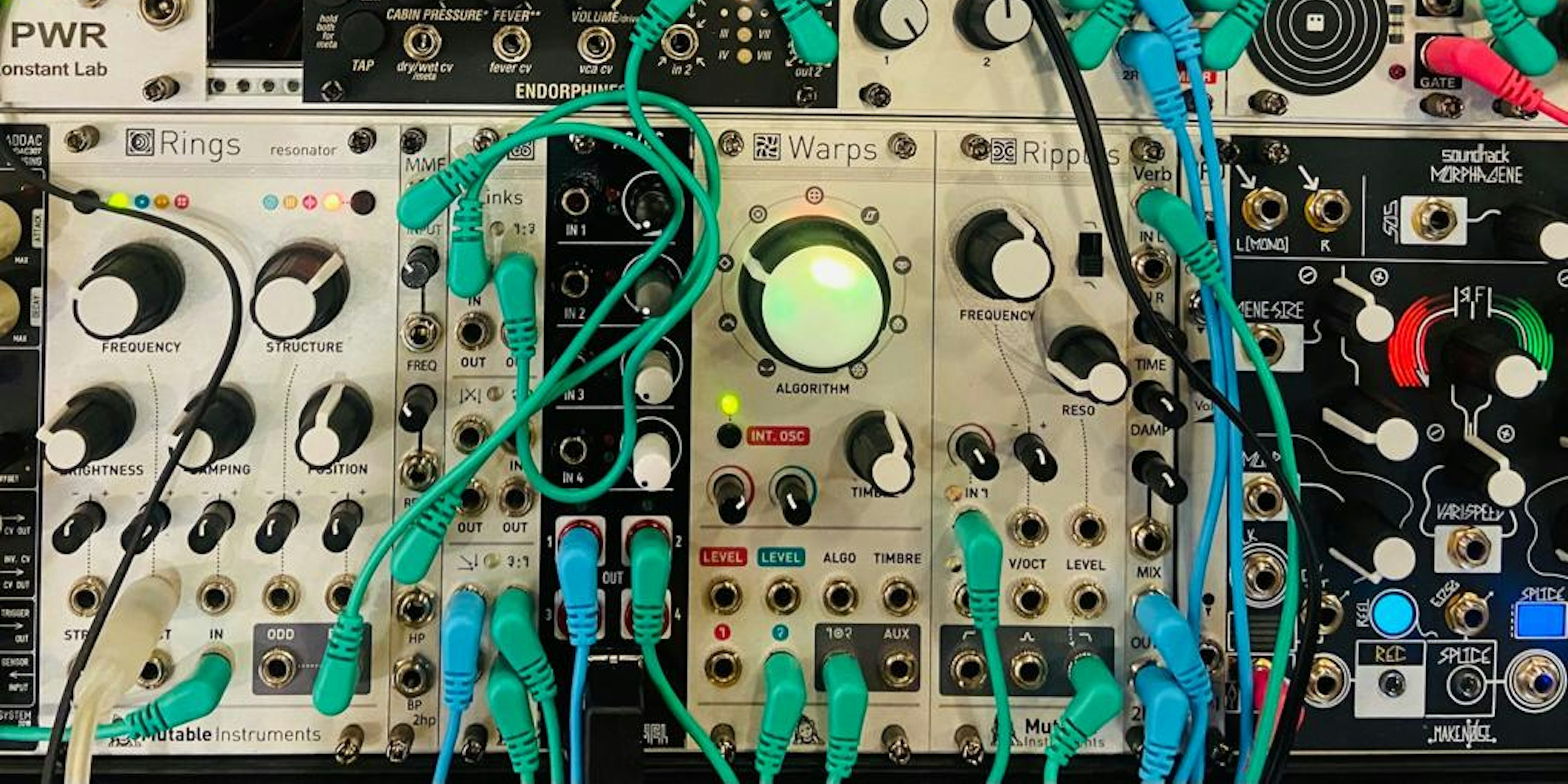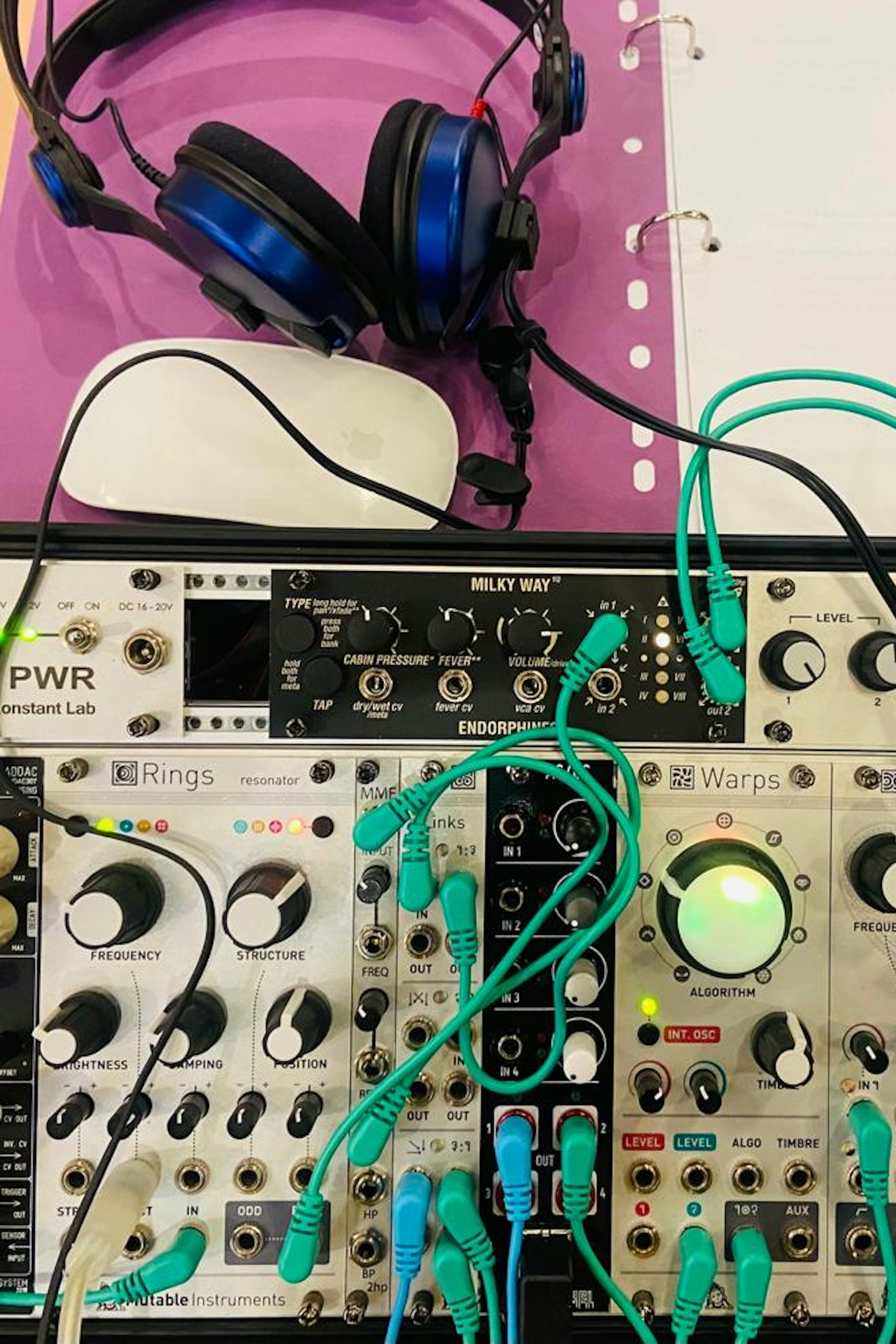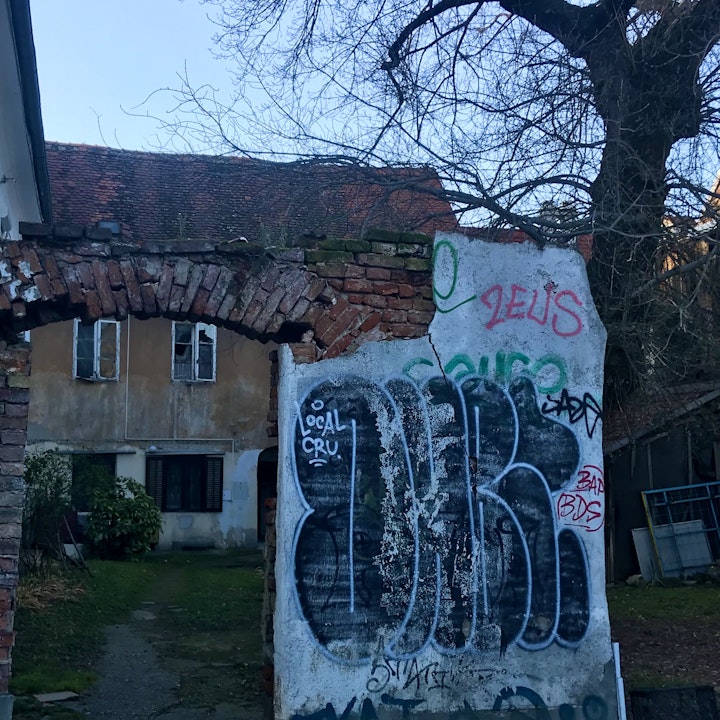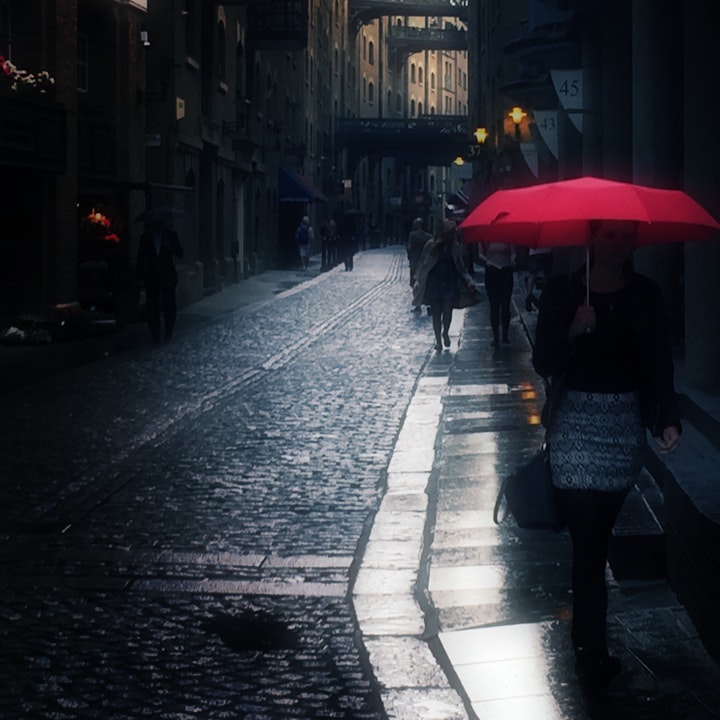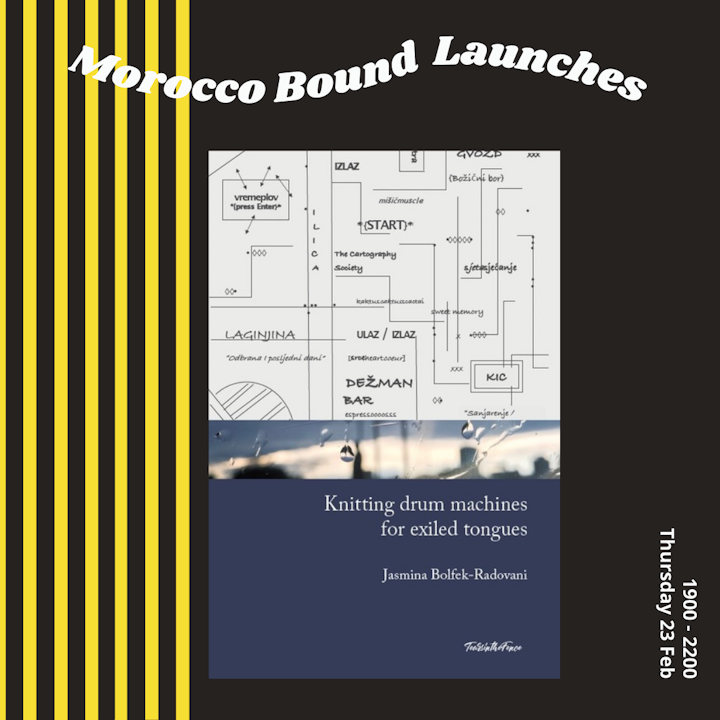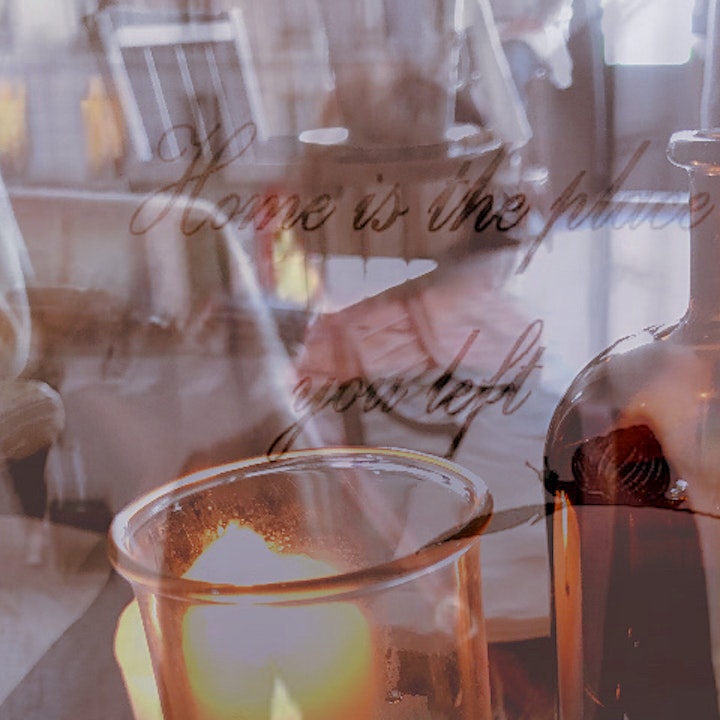All Borders Blur Conference, 11-12 November 2023
“Heart monologues”: the cultural, experimental, and sensorial journey of a multilingual poetry performance
Jasmina Bolfek-Radovani (Queen Mary University of London) & Atau Tanaka (Goldsmiths, University of London)
In this talk Atau and I will present the creative journey of the multilingual, multimedia poetry performance “Heart monologues” by shortly discussing three of its aspects: the cultural, the experimental, and the sensorial or embodied. I will say something about the first two aspects, and Atau will speak about the last aspect. [Slides available here]
1. Introduction
Heart monologues is a 33-minute-long performance based on a long poem sequence of the same title consisting of thirteen poems in English, French, and Croatian that I wrote in 2018, and later reworked for inclusion in my multilingual poetry collection Knitting drum machines for exiled tongues. HM was premiered at the Regent Street Cinema in London on 16 March 2022 following an invitation by Professor Terry Lamb (University of Westminster) to present a multilingual poetry performance at the first University of Westminster festival on global culture “World in Westminster” that took place 15-17 March 2022. After London, HM was performed again at the Dellaville café in Paris on the 21 March 2023 as part of the Ivy Writers Paris Bilingual Experimental Reading series, and at Galerija Makina in Pula on the 13 April 23. On that journey HM was funded by the Centre for Poetry and the University of Westminster, and supported by Galerija Makina / City of Pula. Among its partners are the Centre for Digital Music, QMUL, the Research Centre for Language Acts and Worldmaking, the Cultural Information Centre Zagreb, and the Paris-based theatre collective Nonumoi.
2. The Cultural Journey: from London to Paris to Pula
When reflecting on the cultural journey of HM and how to articulate the experience, it became clear to me that the concept of culture needed to be rethought.
By this I mean a definition of the concept of culture as dynamic, instead of static, and a rethinking of cultural difference as a continuum rather than opposition. It became very useful to think about culture as process of change itself and to consider a topological approach to the definition of culture and cultural change that lies at the centre of Celia Lury’s theory on topologies of culture. What this means – put very simply - is defining culture in terms of relations, flows, clouds, networks, rather than its essential properties.[i]
If we agree to think about culture, language and identity in those terms, it becomes possible to think of borders as non-fixed, constantly changing, and blurred, and of boundaries that both connect, and divide; I believe this is especially important for a proper understanding of multilingualism; in the space of the multilingual, borders and boundaries blur, and sounds and textures interconnect.
So, in that context, we can speak of the third spaces of the cinema, the café and the gallery we performed in as events on a space-time continuum: the space of the Regent Street cinema with its rich history as the oldest cinema in London created in 1848, the dimmed cabaret-like space of the Dellaville café of Paris from the early 1900s, and the intimate space of Galerija Makina in the liminal city of Pula with a rich underground culture become single points on that continuum.
3. The Experimental Journey: Moving Between Sound, Language and (Multilingual) Voice
When discussing the artistic vision of the HM performance, Atau and I imagined readings that are less declarative, and a sonic integration with the music that is more organic, and Delphine Salkin’s mise-en-scene and artistic co-direction allowed us fulfil this vision. The heartbeat sounds from Atau’s soundtrack “Heart beat monitor” and his live performance on stage of “Myogram” were combined with verses of live poetry on stage read by a variety of readers (Bridget Knapper, Robert Santek, Delphine Salkin, myself, and Atau), and mixed with two pre-recorded voices (Emma Macpherson and Daniel Loayza). Last but not least, Delphine’s sound piece “Heart Coeur Srce” was played between poems 11 and 12 in which the sober notes of Pascal Salkin’s musical score are set against the multiple voices of people saying the word ‘heart’ in twenty-nine languages. Although we did not explore the visual textual element in the performance, visual poetry is one of the essential features of the HM multilingual poem; the sonic and visual correspondences of the words in different languages work together to produce a sonic multilingual piece with its own musical score.
To illustrate what I described, I will play an extract from the latest performance in Pula [teaser can be accessed here].
A consequence of the multivocal and multilingual character of HM naturally led to conceiving of it as being essentially modular; by modular I mean having the conceptual and creative freedom to adapt the modalities of staging, performing and reading to the place and environment we were performing in.
Another important question for me was to try and gain a better understanding of the multilingual voice in the context of performance, and how to stage the voice(s) of a multilingual subject in the performative context.
My theoretical underpinnings when preparing the artistic direction of HM involved theories on voice by the theatre and performance studies critic Konstantinos Thomaidis, and the philosopher Andrea Cavarero; they both call for a fresh re-imagining of the voice in performance and point to its subversive potential.
I became particularly interested in Cavarero’s understanding of vocality that predates language creating a pleasure that takes us back to the “maternal or “semiotic chora (to use Kristeva’s expression)”. I found the idea of the semiotic chora very useful for a fuller understanding of the multilingual voice in performance. There exists a particular pleasure in listening to multilingual sounds of familiar and unfamiliar languages that comes, I think, from this ancient sensation of babies enunciating the stammering sounds of baby language...
I would like to finish with a quotation from an article from 1985 by the American artist Larry Wendt in which he discusses the text-sound connections, the role of visual poetry and the use of technology in sound poetry. As Wendt writes:
a sound poem is performed rather than merely read out loud. Vocalizations are projected off the page as a theatrical gesture and their existence as an acoustical event is the essence of the work…. The 'text' for such performances can range from a formal sort of notation similar to music notation to absolutely no text at all. Many people who work in sound poetry produce visual poetry as well. The visual aspect of language parallels its sonic aspects in that both are non-semantic, concrete dimensions of language.[ii]
In the next section Atau will say a few words about setting music to text followed by a brief explanation of the principles of using heart and muscle sensors in “Heart monologues”.
4. Sensorial Level: Body and Gesture: From soundtrack to live performance
Atau has presented here the evolution of his method of work on the Heart Monologues performance.
•Biorhythms CD: Heart Beat Monitor
•Myogram: sonification of muscle physiology
•Modular synthesizer: processing breath and voice
••In performance:
Body alongside text, voice, language
Call and response
Sonic-linguistic interaction
5. Conclusion
Addressing the conference questions of spoken-word poetry and its relationship with the visual arts/music/dance/theatre, and its relationship to digital media, this talk aimed to present and discuss some of the essential elements of the creative journey and process of staging the multilingual poetry performance “Heart monologues” in the context of multimedia and embodied technologies. It spoke of its advantages and challenges and outlined some of its complexities.
[i] See Celia Lury’s work and multidisciplinary project “A topological approach to cultural dynamics” that brings together scholars from a myriad of disciplines, including sociology, psychology, politics, neuroscience, web-based information systems, all of whom are applying topology to their work. See also interview with Celia Lury, Luciana Parisi and Tiziana Terranova on the special issue that was one of the project’s main outputs: Topologies of Culture, Theory, Culture & Society, Jul-Sep 2012, 29.4-5, https://www.theoryculturesociety.org/interview-with-celia-lury-luciana-parisi-and-tiziana-terranova-on-topologies/
[ii] Wendt, Larry, “Sound Poetry: I. History of Electro-Acoustic Approaches II. Connections to Advanced Electronic Technologies”, p. 12.
